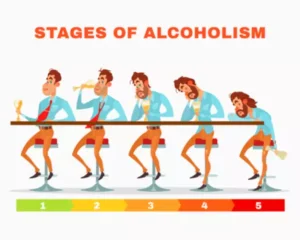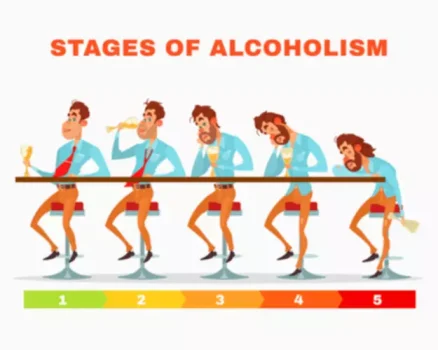Don't miss our holiday offer - up to 50% OFF!
Does Menopause Change the Way You Metabolize Alcohol?

If you consume alcohol regularly, it may take longer for your tolerance to reset compared to occasional drinkers. Have you ever noticed that it takes more and more alcohol to experience the same level of intoxication? This phenomenon is known as alcohol tolerance, and it can have several implications for both occasional and regular drinkers. Identifying triggers for alcohol use is a crucial step in managing cravings effectively.
Has Your Child Abused Amphetamine Drugs to Boost Their Grades?
The rapid elimination of alcohol from the system due to the presence of certain liver enzymes is called metabolic tolerance. The enzyme reduces the time in which alcohol effects are felt; this means that alcohol intoxication is greatly reduced in the individual. Some individuals have increased levels of this enzyme, while some do not. If you choose to consume alcohol after resetting your tolerance, it’s crucial to do so responsibly. Moderate drinking is generally defined as up to one drink per day for women and up to two drinks per day for men.
The Truth About What is Dual Diagnosis Treatment Program
It’s essential to understand your triggers—those people, places, or situations that may lead to drinking. By avoiding environments where drinking is common, such as bars or parties, you can minimize exposure to temptation. The duration of tolerance is influenced by factors such as the frequency of use, the dosage, and individual metabolic rates, with chronic users potentially experiencing longer-lasting tolerance. In some cases, if the substance is reintroduced, the tolerance returns more quickly due to “cross-tolerance” or the body’s previous adaptation to the substance. The main difference between drug tolerance and drug dependence lies in their nature and severity.
Addiction and Reward System: Definition, Addiction Impacts, Assessment, and Treatment

Giving up alcohol for a month gives our bodies an opportunity to heal and recover. If you don’t use a period of abstinence wisely, you face risks when you return to drinking. Functional tolerance describes the most basic kind of tolerance developed by most people who drink regularly over a period of time. The more alcohol intake you can handle, the more you can mask an alcohol problem. However, it is possible to lose your level of tolerance to alcohol, particularly if you quit drinking.
A treatment center will attempt to verify your health insurance benefits and/or necessary authorizations on your behalf. We cannot guarantee payment or verification eligibility as conveyed by your health insurance provider will be accurate and complete. Payment of benefits are subject to all terms, conditions, https://ecosoberhouse.com/ limitations, and exclusions of the member’s contract at time of service. Yes, even when your alcohol tolerance is reset, you may still have some tolerance to specific effects such as impaired judgment or motor skills. These effects can be experienced at lower alcohol levels compared to others.
GABA is an inhibitory chemical that slows down activity when it’s time to rest and relax. A period of heavy drinking may cause your brain to respond by producing fewer inhibitory chemicals and more excitatory chemicals. This may start to counteract the effects of alcohol, leading to diminishing effects over time. Your body can also adjust the number of GABA receptors in your brain so that it’s hard marijuana addiction to achieve rest and relaxing effects.
While tolerance alone does not indicate alcohol addiction, it can be a risk factor for developing alcohol use disorder if consumption becomes excessive and uncontrollable. Explore marijuana and its psychological impact, from brain function to mental health risks. Discover how alcoholism develops over time, its impact on health, and the stages of this long-term progression. When your environment is clear of alcohol, you can focus on healthier habits. For instance, consider stocking your pantry with non-alcoholic beverages that you enjoy, such as flavored seltzers or herbal teas.

This process is particularly evident with substances affecting dopamine and GABA pathways, such as opioids and sedatives. Some substances only lead to psychological addiction, while others can lead to physical addiction. Genetic differences do account for some differences in alcohol tolerance, which in some cases fall along ethnic lines. As described above, most Asians don’t have the alcohol metabolic enzyme alcohol dehydrogenase (ADH), which means they tend to get drunk faster than Americans or Europeans. Functional alcohol tolerance is often the reason for accidents on the road or at the workplace.
- These factors not only influence how alcohol affects us but also how we might approach moderation or abstinence.
- As a result of lowering the tolerance, one will feel the effects of alcohol after consuming smaller quantities than before.
- If you increase your drinking to compensate for this tolerance, your tolerance will likely get worse.
Step 4: Write Down Your Problems

Explore alarming alcohol relapse statistics & facts, triggers, and effective prevention strategies. Explore how drugs are all around us, their impact, and prevention strategies to safeguard your loved ones. Discover what Alcoholics Anonymous how to reset alcohol tolerance is, its impact on recovery, and how it influences other programs. Explore ways to combat substance abuse in college students, from prevention to effective intervention methods.
Tips to change your relationship with alcohol
As a result, even a minimal intake of alcohol can lead to noticeable and often severe reactions, distinguishing this condition from the typical experience of over-intoxication. Studies have found that women get drunk faster and feel stronger effects than men. This is because they have smaller bodies and a higher proportion of fat than men, so their bodies need fewer drinks to induce insobriety. Some people have slower variants of these enzymes, which has been linked to tolerance and dependence.
